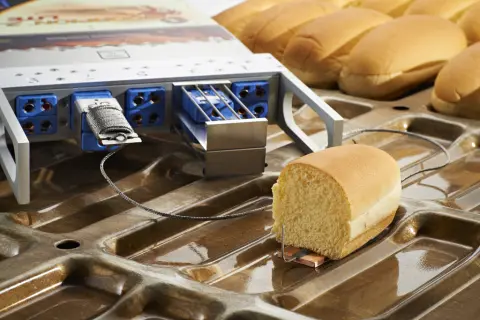Perfect color, bite and shelf life don’t happen by accident – they’re baked in when temperature and humidity work in combination. In a commercial bakery, those two forces decide how fast dough sets, how moisture escapes and whether a cookie snaps or a bun stays soft. Products for temperature and humidity monitoring for commercial bakery ovens in the USA from Reading Thermal give you the control to hit spec every day without trial-and-error guesswork.
Why Both Temperature and Humidity Matter
Temperature shapes the bake curve – how quickly heat reaches the product surface and core – while humidity determines how moisture moves. Too dry, and crust forms too fast, trapping steam and creating tunnels or a thick shell. Too wet, and color lags and texture turns leathery.
Getting the balance right helps you lock in volume, set structure at the right moment, and build consistent color across the width of the belt. When you can see the relationship between heat and moisture in real time, you’ll fix root causes instead of chasing symptoms like pale bottoms or brittle edges.
What “Good” Looks Like in a Busy Plant
A good monitoring routine is repeatable, simple and tied to outcomes your team cares about – color targets, water activity and day-two softness. It should capture the full path through the oven, not just a spot check at the exit. The profile you want tells a clear story: how air temperature ramps in each zone, when the product hits set point, and how humidity rises and falls as water leaves the dough. With that picture, you can tune dampers, zone setpoints and conveyor speeds with confidence rather than hunches.
Tools That Make Monitoring Easier
Reading Thermal’s SCORPION® 2 Data Logger gives you a practical way to see temperature and humidity together on the same run. Pair the logger with a Temperature Sensor Array to map hot and cool spots across the belt, then add the Humidity Sensor to watch how moisture actually behaves inside the oven. Because the platform is modular, you can start with temperature, add humidity when you’re ready and bring in Air Velocity or Heat Flux sensors later if airflow or heat transfer questions pop up.
Turning Profiles Into Process Improvements
Data should drive action, not sit in a folder. SCORPION® Software makes it easy to overlay runs, compare lines and share results in a format production and quality both understand. If a cracker line shows slow color development after a formula change, comparing last week’s humidity curve to today’s often reveals the culprit. If buns are drying out by day two, a quick review might show an aggressive low-humidity zone early in the bake that’s pulling moisture too fast. Adjustments to steam injection, damper position, or zone temperatures become targeted tweaks, not full-scale experiments.
Small Habits That Protect Big Results
Great profiles start with consistent setup. Use the same carriers and sensor placements each time, and schedule regular calibration so a drifting probe doesn’t send you on a wild goose chase. Keep thermal barriers clean and intact so the logger stays safe in tough conditions. Most importantly, tie every monitoring run to a question: are we validating a new product, chasing belt-edge color, or aligning two ovens in different plants? When the team knows the “why,” they’ll use the tools more often and act on the findings faster.
See why Reading Thermal equipment for temperature and humidity monitoring for commercial bakery ovens in the USA is the best choice by calling 610-678-5890 or using our online contact form.

